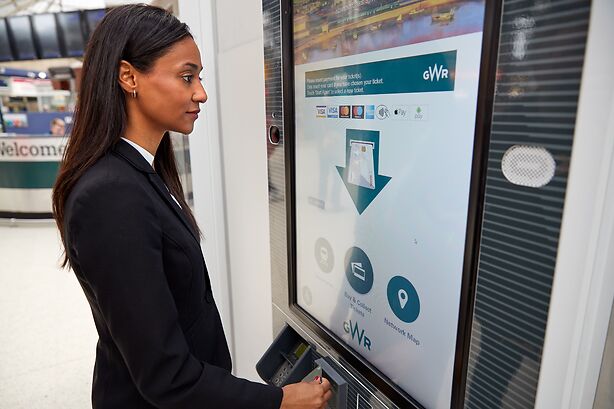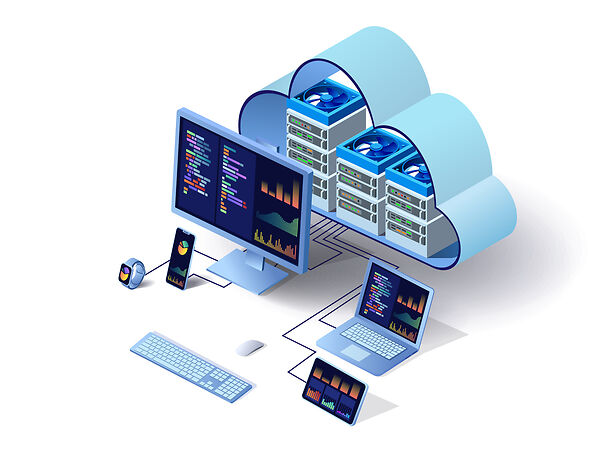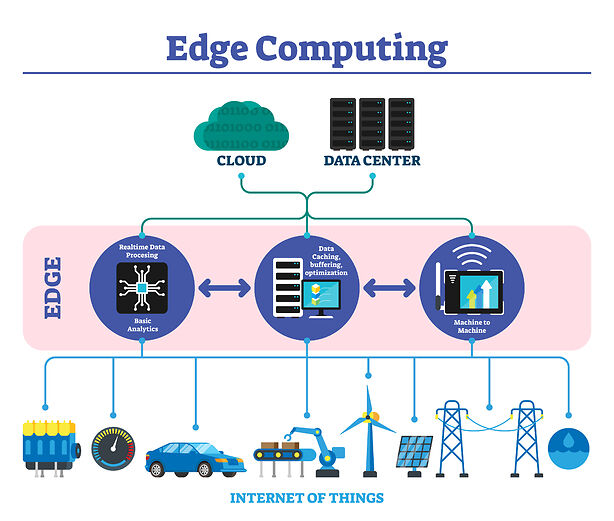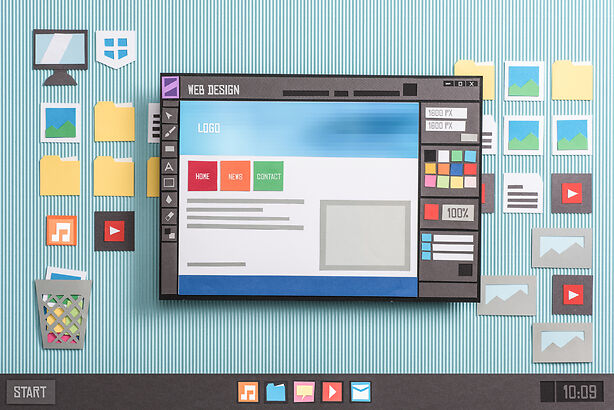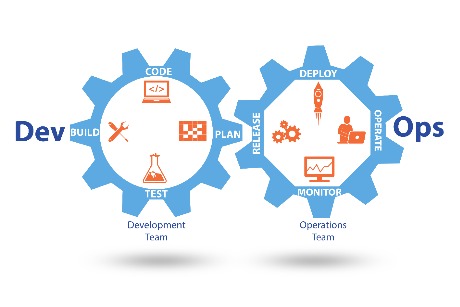New Home? A Guide To Search Like A Pro – World Earth Day Edition

Everything starts with a dream, even your new home. And some dreams can benefit both you and the environment you live in! A healthy and sustainable home is one such dream you need to achieve. That’s where we come in! But before that, Congratulations! You have taken the first step in realizing your dream. You have started the search!
You’ve decided to embark on the exciting journey of finding a new home. The journey to homeownership starts with a search, then the evaluation phase, and finally the move. Whether it’s your first try into the world of homeownership or a fresh start for the search that has been happening for quite a long time, you need this guide.
Our comprehensive guide will equip you with the knowledge and best practices to
- Navigate the search process like a seasoned pro
- Ensure due diligence during the evaluation phase
- Finalise and move into your dream home that is financially sound and environmentally healthy as well.
Remember, a healthy home is the foundation for a healthy life, and this World Earth Day serves as a perfect reminder to prioritize not just your physical well-being but also the environment you live in.
A Green Guide, To Search and Move-In Like A Pro
Our green guide goes beyond just finding a house with the right number of bedrooms and bathrooms. It emphasizes the importance of securing a healthy and sustainable living space, one that aligns with your long-term goals and promotes overall well-being for you and our environment. We have listed some best practices for you to help you with your search for your family’s new base.

1. Be Aware of Latest Real Estate Changes
The real estate market is constantly evolving, and staying informed is crucial. One recent development is the removal of set commission rules for home sellers. Traditionally, sellers paid a 6% commission split between listing and selling agents, impacting the final sale price. This change could have positive implications for home buyers, potentially leading to:
- Lower housing costs: With commission rates potentially decreasing, overall housing affordability could improve.
- Flexible fee structures: Buyer agents may now offer diverse fee options like flat rates or sliding scales, allowing you to find a structure that aligns with your budget.
- Increased competition: Agents might be more inclined to compete for your business, potentially leading to better representation.
Remember to discuss commission fees openly with any buyer’s agent you consider working with.
2. The Latest Real Estate Trends- The Green Movement
When it comes to sustainable living, real estate has taken commendable leaps in ensuring the safety and sustainability of our environment. Here are some exciting green trends to consider on your quest for a new home.
- Energy-Efficient Homes: Look for houses with features like Energy Star appliances, solar panels, and smart thermostats that reduce your environmental impact and utility bills.
- Sustainable Building Materials: Homes built with recycled materials, sustainably sourced wood, and low-VOC paints minimize environmental damage.
- Water-Saving Features: Drought-resistant landscaping, low-flow faucets and showerheads, and rainwater harvesting systems conserve precious water resources.
3. Embrace the Power of Eco-research
Curiosity is key! Be curious about your new home’s environment. And don’t stop there, research as much as you can. Thorough research ensures you find a home that not only promotes just comfort but also your overall and environmental well-being.
Location, Location, Location (and Green Initiatives!)
The first point of your search should start with the listing in itself. Know more about the location identifying your ideal choice. To identify your ideal location, you can consider factors like:
- Proximity to Public Transportation and Walkability: Reducing reliance on cars minimizes carbon emissions and promotes a healthy lifestyle.
- Access to Green Spaces: Parks, community gardens, and bike paths contribute to a healthy environment and a sense of well-being.
- Energy-Efficient Infrastructure: Look for areas with a focus on renewable energy sources or smart grid technology.
Going beyond the basic amenities, consider the long-term implications of your location as well. Think about access to healthcare facilities, noise levels, and potential future developments that might impact the surrounding area. A healthy neighborhood contributes significantly to your overall well-being.
Know Your Budget: Affordability and Sustainability
Financial planning is essential and can be Earth-friendly. It involves its own share of research. Determine a realistic budget that incorporates not just the purchase price but also ongoing costs like:
- Mortgage payments
- Property taxes (Pro Tip: Consider researching average real estate tax rates in your desired location.)
- Maintenance and repairs
- Homeowners Insurance
- Potential HOA fees
Added to these, also factor in environmental options like
- Energy Efficiency Upgrades: Factor in potential upgrades like insulation improvements or solar panel installation, which can lead to long-term energy cost savings.
- Sustainable Transportation Options: Budget for a bike or invest in an electric vehicle if your location supports sustainable commuting.
- Hidden Costs: Remember to factor in hidden costs like potential renovations or upgrades needed to make the space suit your needs.
A proper financial plan ensures you purchase a home that promotes financial health, environmental health as well as physical well-being.
4. Search Smarter and Greener, Not Harder
Leverage Online Resources
Technology is your friend! Utilize online tools to streamline your search. Popular real estate websites allow you to filter listings based on specific criteria like location, price range, and property features.
Many real estate websites allow you to filter listings based on eco-friendly features like Energy Star certification or LEED certification (Leadership in Energy and Environmental Design).
How about a Real Estate Agent
An experienced real estate agent can be a valuable asset especially if they specialize in sustainable properties.. They can:
- Provide local market expertise and expertise on local green building initiatives and resources.
- Help you navigate the process of obtaining green certifications.
- Negotiate on your behalf and connect you with eco-conscious vendors for inspections and services.
- Guide you through the complexities of the buying process
- Connect you with trusted vendors for inspections and title searches
5. Secure Your Dream Home – Beyond the Bricks and Mortar
Conduct a Thorough Title Search
Finding the perfect house is only half the battle. Get a comprehensive Title Search done by a qualified professional. This crucial step ensures the property has a clear title, free from any legal claims. A clean title gives you peace of mind and protects your investment.
Don’t Forget the City Lien Search
Along with a title search, consider a City Lien Search. This reveals any outstanding debts associated with the property, like unpaid taxes or code violations. Addressing these issues before purchase can save you from future headaches and financial burdens.
Understand Real Estate Taxes
Taxes are a reality of homeownership. Familiarize yourself with the average real estate tax rates in your area. This information is vital for budgeting and ensuring you can comfortably afford the ongoing costs of maintaining your new home.
6. Moving In and Beyond: Building a Healthy Home
These real-time tips that we curated from our real estate experts will help you get your dream home peacefully, efficiently, and eco-friendly. But the ball doesn’t stop there. We don’t want you to have just a nice home, we want you to have a healthy home. The following tips will help

Prioritize Indoor Air Quality:
Once you’ve secured your new home, prioritize creating a healthy living environment. Ensure proper ventilation by opening windows regularly and using exhaust fans in kitchens and bathrooms. Consider investing in air purifiers, especially if you live in an area with high pollution levels or have allergies.
Embrace Natural Light:
Natural light not only brightens your space but also offers mood-boosting benefits. Maximize natural light by keeping windows clear and exploring options like skylights or light tubes for darker areas.
Maintain a Healthy Humidity Level:
Mold thrives in a damp environment. Aim for a humidity level between 30% and 50% to prevent mold growth and respiratory issues. Invest in a hygrometer to monitor humidity levels and consider a dehumidifier if needed.
Create a Safe and Clean Environment:
- Conduct regular inspections for potential hazards like lead paint or asbestos.
- Use eco-friendly cleaning products to minimize exposure to harmful chemicals.
- Address any leaks or water damage promptly to prevent mold growth.
- Regularly clean carpets and air ducts to remove dust and allergens.
Bring Nature Indoors:
Houseplants not only add aesthetic appeal but also purify the air by removing toxins. Research low-maintenance and air-purifying plants like snake plants, spider plants, and peace lilies.
Invest in a Healthy Sleep Environment:
A good night’s sleep is crucial for overall health. Ensure your bedroom is dark, quiet, and cool for optimal sleep. Consider blackout curtains, earplugs, and a comfortable mattress.
Happy Living!

Top 7 latest trends driving next-generation customer service in 2022
Why is customer service a big deal? How important is it to your business? Well, the answer to that question would be, “The customer service you offer can be your ticket to writing your success story.” Fascinating enough? Yes, it is. And with the importance of customer service growing and glowing every day, the customer’s expectations remained the same. That is a friendly and knowledgeable interaction filled with good experience, with the goal being to provide a quick and efficient solution to the customer’s problem or question. With that being said, the customer is and will always be in control, and they have the power to decide the future of your business. If you don’t prioritise customer service for your business, some other competitor of yours will. And with customer service issues emerging every year, keeping up with these can be quite a challenge. But it is a crucial part because about 77% of the customers stay loyal to the company that is providing top-notch service to them.
Drilling down, a few years back, customer service meant calling or messaging customers through the mobile phone to offer services or was the best you could do to reach out to your customers, but not anymore. The future of customer service can be determined by the huge shifts taking place in customer service to add real value and solve customers’ problems that are currently dominating the market. What you need for enhanced customer service are some tools and technologies that are driven by innovations. These new implementations improve customer and agent experiences, along with business metrics like revenue, operational costs, and customer ratings. But you may often misunderstand the usage of technology and take it for granted, meaning, the implementation of any technology or trend leads to a sinking feeling that almost feels like nothing is going in your way. Maintaining the trends and execution of these needs to be done in a fairly consistent way to avoid consumer dissatisfaction and obtain more elation.
To help you plan your strategy more effectively, we put together a list of the latest trends that will impact the customer service industry and prepare you for pleasant customer service in the coming year. It’s time to move forward. Let’s go!
- Omnichannel support
- Chat support is being handled by chatbots now
- Mobile devices are growing day by day
- Video support is the magic trick
- Evolving self-service
- Social media service is ‘The Trend’
- Personalization is a must now
- Final words
Are you still stuck in the dilemma that customer service is about calling customers and taking feedback from them? Well, those days are long gone. Customers don’t expect you to call them and ask if they have any questions or concerns. Rather, they expect to connect with your brand or company through multiple mediums like phone, social media, company website, emails, SMS, etc. But why maintain so many channels when you can just have one point of contact with all of them? The need to streamline the customer’s information and messages across various channels rises because they expect you to be available 24/7. If not, some may lose patience and confidence in your company, which leads to customer dissatisfaction. The fact that companies that delivered strong omnichannel customer service retained 89% of their customers is no joke. And the point is that maintaining different mediums is not important, but maintaining perfect coordination between these becomes a highlight here.
Using omnichannel support helps you deliver a more cohesive, real-time service, integrated customer experience, free of restrictions solutions, and also enables you to get in-depth insights no matter how a customer reaches out to you. Leveraging the omnichannel customer service trend can ensure that you provide a greater interaction history from every channel under a single roof along with exceptional service to your customers because, if we are looking into the demographics of this tech world, there is no question that the communication channels play a major role in promoting businesses. Not just the customer but these services can also support your team in gaining a bigger coverage of customers with fewer efforts. So, tell us when you are going to go full omnichannel.
We all want answers to our questions in seconds or minutes and to do this, chatbots are the perfect option because no human can always be available, which is why you need to take advantage of the technology here. Chatbots have been the next big thing in customer service since the advancements we have seen in AI and ML, and their popularity is not ending soon because since they were discovered, they have been growing in every aspect. With that, more and more businesses opt to implement chatbots to automate routine questions quickly, and chatbots can direct customers to solve their issues or gather the needed information with the answers they provide. If you want to look into the numbers in chatbots, we can say 65% of millennials want chatbots involved in the customer service process. This way, they are at every stage in the service process since they are streamlining and optimising customer experiences.
With the help of these, chatbots have been becoming more powerful and more likely to understand the users from the insights they get from resources like self-help articles or FAQs to resolve customer questions, and with the help of these, they develop knowledge graphs to help customers better and understand them more. No matter how the question is asked, whether it is twisted or turned, chatbots can identify the answer with just one keyword. This understanding has led to benefits like increased customer happiness, aiding lead generation, getting answers round-the-clock, not waiting in lines or in queues, enhancing the agent experience by triaging customer requests, and not needing to repeat oneself when transferred to agents. This supports keeping a high level of customers satisfied with your service while simultaneously decreasing support tickets. But remember, no technology should go unchecked. No matter how mediocre the technology you are deploying is, it should always be checked with a human agent. If not, it may lead to alienation of your customers or worse, customer dissatisfaction.
What is the first thing you usually use to learn about something? Yes, you are right. Your mobile phone is the answer. Mobile devices have always been the beginning of customer service and they will be the biggest turnover too. Because the numbers state that mobile customer service offered accounted for 65 percent of all e-commerce traffic and 53 percent of sales, and this mobile adoption is called m-commerce. They have been acting like a bridge between your company and the physical world, which is your customers. By m-commerce, we mean two things. One is a mobile application and the other is a website that supports a mobile layout. Considering that there is a constant increase in the number of users that use mobile phones, using it to your advantage, launching m-commerce can help you have a larger scope. This new buzzword can help you create a great marketing channel for your business.
Using m-commerce to carry out business transactions can be a great way to attract new customers because not all of them will go on to their laptops to search for your services. Not just that, mobiles are not just solely for purchasing or booking your services rather they offer bigger insights on the in-store experience, price comparison, customer reviews, and looking up product information. To add a little bit more spice, you can add text and voice search, which will provide a better customer experience than you would be expecting. To transform your business, m-commerce will act as the main approach to deliver customer personalization and a promotional expansion that will develop customer loyalty and rapport with customers. So, when are you getting on the train to m-commerce?
What’s better than a video chat with your customers when they are confused about the products or services? Video chat has been seeing a drastic rise in recent times because it has become a bridge between online and offline experiences. The advanced technology and new marketing tactics of these videos can be used as perfect leverage to reach out to your customers. Imagine you are in a furniture showroom or a clothing store. Using video chat to let you explore your products by just sitting at home, which will make them feel like kings and queens, and that would be the turning point for you as it helps you earn some customer groups and loyalty. Video is a stable and effective platform to offer online experiences in ways that no other channel can, and it is not just us; 85% of the customers find video chat a wholesome experience because they don’t want to limit it to phone calls, chats, or emails anymore.
But there is a catch here. Not everyone can tackle technology in one go. To offer a seamless video service experience to your customers, you need to understand the technology and then modify and cater to it according to their needs. Since modern businesses are well aware of the fact that video services are impactful, you need to make sure that you are using this emerging trend to the fullest by using the best premium support you can because technology is fun yet critical. So, analysing this crucial tool and tackling it by using the right setup will provide your business with the best technology support, which will provide your customers with the perfect product details and accurate information. offering real-time assistance to your customers, which will benefit your business in many ways. This way, the video service is turning new tables, and this trend may well continue. So don’t wait for the right time, rather jump on the opportunity and make the move now!
Self-service has always been the customer’s steady preference. This is because there were always people who had enough confidence through crisis-related experience to give it a try to look up answers to their questions before they considered contacting the company through a knowledge base or help center. This can be done through automation. This technology can guide your customer support team in finding accurate solutions to customer problems, maximising efficiency and minimising response time. To maintain a good brand image, you need to make the quality of your customer care service a priority, which is why you need to provide the best automated tools to your customers that can guide them through the hurdles they have been facing. Because this can affect up to 73 percent of shoppers who are in favor of self-service technologies for example automated checkout, automated KYC, etc.
But remember, technology is always tricky and when it comes to automating customer services, you need to step up and have a dedicated knowledge base alongside focusing on factors like quality and searchability, because if not, it will look like you are just flooding in information that the customer will not even understand and with that thorough checking, you can escalate customer satisfaction. You can do that by not just providing a representative-to-customer interaction; rather, you can think outside of the box and include services such as an FAQ page, chatbots, or a comprehensive knowledge base. This will not only improve a significant CSAT but also free up time and burden from your customer service rep team, which helps them focus on complex hand-on tickets for better support. So, look into self-service options you can use for your customers and monitor the impact on customer loyalty and satisfaction.
Social media has always been the most powerful place for many brands. The power it holds can help your business grow in just a few minutes or hours because it evolves continuously. And social media has been on the board of customer service trends because it offers you a great platform to connect with your customers and it gives great coverage to a wide range of audiences. They don’t just offer a face to your brand but rather a place where you can connect with your customers and engage with them, and the best part is to answer their questions by providing customer service with care. Now, this is a crucial part because a survey conducted shows 63% of the customers wanted the brands to have a social media handle for better customer service. But why? Because of the convenience, social media offers are like a children’s game for users to connect and get answers to their questions.
In today’s time, people find brands favourable that are interactive and active on social media. Since it has the highest tendency to intensify your brand by using different genres of content to build up your brand, it acts as a great medium to engage with your customers and develop public relationships with the audience. You can impress your customers by answering their queries that are displayed to the support team on their dashboard in the form of complaints and support requests. The support team can then contact the customer or client over the same platform or through other platforms to resolve their queries, and this can help you gain positive feedback among the customers, which will improve your customer base. As this will increase the number of customers reaching out to you, it also delivers the extra love and care that you are putting into making them comfortable on the platform that they are comfortable with, which will gain customer trust and loyalty. So, step on the pedal now and accelerate your social media support.
What makes you feel most welcome when you enter a clothing store, for example? Well, the personalization they offer while picking up every single piece of clothing from the wardrobe and displaying it only for you. Similarly, in customer service, your customers will love personalization. It isn’t any new concept but is always a buzzword. When you cater services according to the customer’s choices at every touchpoint, this can help you deepen your connection with your customers, making sure that you have loyalty in every step you take. But remember, there is a chance to lose 71% of customers if you are providing a service that is not even close to their preferences. However, the good news is that dark clouds always clear away and the sun shines brightly again. This is why you should find better ways to know your customers, study them, and collect data about them that can help you in the future to ensure you can have tailor-made services for them.
These days, people want more personalised online experiences, and surprisingly, they are even willing to pay more for them. Personalizing services for customers means you are taking it a step further in your marketing strategy too. This includes unifying customer data by understanding the customer’s requirements, studying customer behavior, having contact history, capturing customer data transparently, and studying their likes and dislikes. These tiny steps can help you engage with consumers with a personal touch and add value to their experience. However, it is also important that you know how to walk the walk while talking to your customers and treating them well by eliminating data silos and centralising support processes. You can also get feedback from customers to know how they feel about your services and where you can improve. This offers maximum customer retention because this will show the care and support you are willing to offer to your customers.
Final words
Well, now that you have seen the aforementioned customer service trends, you understand what a customer-centric vision your company needs. The evolving customer trends can be hard to keep track of, but if implemented correctly, your company can meet all the customer expectations. It will transform your traditional customer service strategies into golden rules that will increase customer retention and loyalty to your brand. With all the foreseen trends, one thing is pretty clear, and that is digital technologies play a major role in providing a greater customer experience. Since customers no longer want to just find companies that are reactive, but rather, they are looking for organisations that are proactive and reach out to them to make personalised services. They need to be full of surprises and leap by changing their strategies every now and then. So, are you still waiting for customers to come to you or are you going to follow these trends and prove your worth to them?

Top 10 Emerging Software Development Trends of 2022
Two Things are unstoppable: one is a natural calamity, and the other one is software evolution. Where the first has adverse effects, the latter one is all about the best in software. To cope with the new world paradigm, software is constantly being developed, and this has been going on for years, growing on and on. As we can see with our own eyes, no one stopped using just computers. After them, we had laptops and, of course, it didn’t stop there either. There were many more that came after that. Software is the backbone of the IT world and by applying new approaches in the pivotal areas along with overcoming the challenges, many software advancements came to light in 2022. Well, while some of them took birth out of technological needs, some were brought to the market because of societal needs.
In this article, we focused on the software developments that were trending and still are trending in 2022, which are as follows:
- Cloud Everywhere- Say no more on-premise maintenance
- IoT- The one-touch technology
- AI is still the big thing
- Blockchain- Financial services updated
- Low-code/No-code- The new era of coding
- Edge computing- Neck-to-neck network distribution
- Progressive web apps are instant but impactful
- Programming languages— A rise like never before
- Various Realities- A real-world Sci-fi movie
- Big data- Predictions benefit businesses
- Conclusion
Not to start on a bad note, but the whole COVID pandemic has helped people realise the importance of cloud services and it has bloomed since then. To meet the growing need for business availability, data recovery, and high accessibility, cloud computing has made its way from books to reality. This off-premise forerunner in technology has been offering solutions for storing information in the cloud, which reduces space, money, and risk. And with Corona on the edge, people have been looking for remote work, and in times like these, cloud data centres are experiencing a huge scale-up.
That’s not all; cloud services are being adopted by every industry, including government, startups, finance, healthcare, education, and agriculture. With the flexibility, scalability, and productivity cloud services provide, it is estimated that nearly 70% of companies will be shifting to cloud services. With that, not just cloud biggies like Amazon, Google, and Microsoft, but other companies are experiencing the fruits of this evolution, and this is going to continue for so long. That is because the cloud is not just used for storage purposes; rather, this software is also being used to build apps, manage teams and communicate. This well-known software is expected to have a market worth $150 billion by 2022.
The craze for remote control things or things that can be controlled remotely isn’t new to us. Everyone prefers digital watches over analog, patients are being treated with automated surgeries, and we feel comfortable with airdrops rather than wired earphones. So, this recent shift in human interest and requirements is the reason for IoT’s emergence unexpectedly. IoT is not rocket science; it’s simple. It uses the internet to operate things. The analysis says by 2025 we can see a perfect 30.9 billion units of IoT devices, which are going to lead to a new automated world.
IoT is going to lead the digital transformation of the world because of its security, quick delivery of solutions, and perfect user interface. When this is happening, the IoT is not just profoundly making its way into human lives; rather, it is helping us evolve on a whole new level. In addition, imagine integrating IoT with other technologies. It would be like bringing all the superheroes of Marvel and DC together. By which we mean, the impact this integration is going to have been impeccable and this will help many organisations evolve technologically by bringing them the recognition they deserve. This is because IoT is not just IoT. It can be about the cloud or it can help with 5G, edge computing, AI, and many more.
“AI for all” has been the most trending slogan in the software world for a long time. AI is a complex technology, but it has been one of the greatest inventions of mankind. Several technologies will be used to improve and transform operations, allowing machines to sense, learn, understand, and act to augment human capabilities. This hottest technology has its applications growing at a rapid pace over the next few years. We are not saying this. Look at the stats for yourself. In 2022, 86% of CEOs made AI a mainstream technology in their office, making AI not just a trending technology but becoming a dominant one over the years of advancement it has seen.
AI has made its way into healthcare, banking, gaming, e-commerce, and real estate, and it has only grown since then. With AI acting as a supporting tool for mankind, the revenue growth of AI has been unstoppable and also its sub-branches like Deep Learning, Neural Networks, Cognitive Computing, Natural Language Processing, and Computer Vision are experiencing a sweeping change in revenue. Working together, AI and business will have a long run as the innovations keep going on and there seems to be no end to it. So, if you want to get a piece of the action, AI is the way to go.
Blockchain has been one of the most talked-about technologies in the software industry these days. This technology has had a significant impact not only on cryptocurrency, but also on many other industries. This technology is all about safe transactions that are happening over the internet. With the number of transactions increasing and also the number of hackers, the need for the blockchain has been increasing intensively. Blockchain technology is secure, decentralised, transparent, simplified, and immutable. These are its biggest strengths.
Blockchain has the potential to change the whole industry of finance, but now it has changed its direction and now blockchain is being applied in banking, finance, supply chain management, media, publishing, and healthcare software development with the advancements that have been happening. The forecast says that blockchain will reach a market value of $16 billion by 2023.
Low code or no code, also known as LCNC, is something IT developers would laugh at when it was proposed, but the same concept is now becoming a threat to their jobs. This is because when it comes to software development, everything is about speed. One one-second delay and you will be out of competition. Assisting businesses of all scales, LCNC is acknowledging their need for digital solutions. Providing Continuous Integration and Deployment along with Flexibility and Resilience. This type of software enables individuals to create applications with little knowledge of the subject. This initiative has been gaining momentum with lots of innovations, mergers, and acquisitions on its side.
This will enable businesses to create solutions and deliver them faster than usual. And to adapt to this technology, you don’t need any rocket science or pages and pages of code. All you need is a simple understanding of code, and the tools that provide LCNC will take care of what needs to be done. With every industry going digital in the 21st century, LCNC will be the best technology for your enterprise.
We have already seen the rise of cloud computing in 2022, but that was not the only cloud computing that has interested enterprises. Edge computing, which is related to cloud computing, also caught the eye of investors in the year 2022. This is not just us, but the stats also say that over 57% of companies are going to have edge computing on their roadmap along with 75%, which means three-quarters of industries will be using edge computing to process their data by the end of 2025. Edge computing may be related to cloud computing, but it is the opposite of it. While the public cloud has a centralised data centre, edge computing acquires very low latency (5 to 20 ms.), high bandwidth, regulatory reasons, real-time use cases, smart and powerful end-user devices, etc.
Edge computing Solving the problem of the public cloud by moving data to the edge of the local network has been catching the attention of many industries like healthcare, gaming, transportation, private companies, and many more. With this happening, the competition between the cloud and edge industries is going to be a tough one because whoever invests first in the trending one will benefit the most. So, it’s better to be fast than sorry.
What is the one thing everyone loves about instant noodles? Taste? Of course, but there is another major thing that you missed, which is speed. Now imagine being able to use an app as quickly as making instant noodles instead of waiting for minutes or hours to download it. Why wouldn’t that interest people? And then happened the birth of Progressive Web Apps, or PWA in short. These PWA’s are an integration of the benefits of both web applications and mobile apps. With PWA, users can work on apps with the help of updated browsers and take full advantage of the website with just one click. And if you want to skip to the good part, users can also work offline with no need for installation.
Maybe this is why PWAs have 36% higher conversion rates than native apps. I mean, why wouldn’t it be because of the great features it offers? These multi-pages and single-page applications are faster and lighter to download and provide users with an app-like experience along with an auto-update. These are cost-effective, easy to maintain, and time-saving, which is why Google and Microsoft have heavily invested in this technology, which is also a sign that they are the future of the app industry.
Programming languages— A rise like never before
The programming language landscape in recent years has been going through major changes. Programming languages that are easy to learn and use are becoming more popular, and this is hugely impacting the ranking of programming languages in 2022 and beyond. Here are some languages which you must know about:
Python
Python is the most popular programming language. Python can handle data science, web development, mobile development, and enterprise projects. Python has attracted a lot of teen interest because it is easier to learn than more complex languages. This is why the developments in Python have been unstoppable. Its ability to allow for conducting complex mathematical operations, data analysis, machine learning, and neural network building is what sets Python apart. Maybe for these reasons, a survey held by Stack Overflow shows that Python is the most wanted language to learn among developers. So, if you are thinking about app and web development, make sure you grab a bunch of Python developers.
JavaScript
JavaScript remains the undisputed number one language, especially for web development enthusiasts, and is increasingly popular in other domains, including backend development. The growth dynamics of JS are astounding. If you are looking into the job listings, more than 47.6% of the listings require JavaScript as a primary skill. Well, this assures that JavaScript developers will increase and so will its users. All thanks to AngularJS’s introduction in 2014, JavaScript is managing to sustain many backend operations simultaneously. JavaScript frameworks will be the next big thing in web development and are going to become even more apparent as this year goes on.
Java
Java, being an ancient language, never misses a chance to surprise us with new features and old commitments. Java provides high stability and reliability, automatic memory allocation, high-level security, Android App Development, and a diverse set of open-source libraries. Apart from these features, Java still remains legendary because of its write once and execute many times (WORA) and the most important functionality (JVM). As a result, prominent programming languages such as Kotlin and Groovy are also using the JVM as their runtime. This is the reason that even though many languages have emerged since Java, leading service providers like Google, Microsoft, and Amazon still have Java as their number one choice in enterprise software development. Due to its top rank in software development and no competitors, Java is one of the biggest programming languages investors and startups should look out for.
Modern languages
2022 was not about the existing niche languages, but there are a few modern and newer development languages that surprised us. Languages like Rust, Go, Typescript, and Kotlin focus on delivering fast performance, expressiveness, multi-threaded processing, null safety, cross-device optimization, type inference, seamless deployment, and conciseness. These languages are free of past baggage and are also poised to meet the demands of today’s developers. Backed by the tech giants like Google and Microsoft, which have been heavily investing in the growth of these projects over the last few years, these languages are surely going to make the future of software development brighter and bigger.
Augmented Reality
AR, or augmented reality, is something that you use every day. Yes, you heard it right, every day. This is because your mobile phone is one of them. Well, if you want something sophisticated, then the Avatar movie is a good example. Nothing about that movie was real; everything was the magic of a green screen and computer graphics. This phenomenon experienced unprecedented growth in the year 2022. One of the reasons is the heavy investment of big savvy companies like Amazon, Apple, Facebook, Microsoft, Google, and others in the craze this technology has gained over the years. Every sector, from marketing, education, medical, e-commerce, and GPS tracking, has eyes for this marvelous technology that is going to take us into a new realm of reality and which is likely to have a perfect number of consumers that can make any business hit the stock board.
Virtual Reality
Imagine experiencing the beauty and essence of scenery just by sitting at home without the need to actually go there. Well, that is what VR, or virtual reality, does. If you are a gamer, you must know about this. And with the gaming and video industry booming, VR is never leaving us. This is one of the technologies that is going to be unstoppable once it reaches its full potential because not just for gaming, VR can be implemented in everything and everywhere, and this will be one of the greatest human inventions and also an addiction at the same time. This exponential growth of VR will make over 58.9 million people use VR for everything. With VR, your ideas don’t have to just stay as ideas; rather, they can be turned into a vision and then a profitable business, which will be a win-win situation for you and your users. Also, I should say VR can be a magic ball if it is integrated with AI or other trending technologies because that would make the world turn into a sci-fi movie.
Mixed Reality
What happens when you mix two explosives that have the capacity to destroy anything? Well, that would create something that could destroy the whole world. Similarly, mixed reality is a combination of the two best elements of the real world, which is a combination of virtual and augmented reality. But this does the opposite. It is going to save the world. With that being said, MR is going to unlock new potential in the world of reality. Also, 90% of companies have confirmed that they are already experimenting with MR in some way or another. The wave of mixed reality hit us at the right time because of the digital transformation that has been going on. MR will be the perfect one to pick up. MR is also known as hybrid reality as it replicates the benefits of AR and VR, and that makes it unbeatable. So, MR is going to change the way we live if taken in the right direction.
While we are talking about technologies that started repeating benefits in 2022, big data isn’t something that came into existence in this era, rather it has been here for a very long time, but it has started gaining more and more attention in recent years. This attention is not going anywhere; rather, it is going to be increased in the upcoming years. This is because every company is thriving on data these days. With an increasing number of companies and start-ups, every company is experiencing a good shift in customer numbers, which is why each company is maintaining big data analytics to understand the large volume of data, which will turn the data collected into useful insights that can help them frame profitable strategies.
For instance, if a coffee shop has introduced a new flavor to its menu, how will they know if this flavour is benefiting them or losing customer loyalty? This is where big data will analyse what its customers want and help the shop build credibility based on using big data. According to the expert’s prediction, by the end of 2022, the global Big Data market will reach $70 billion and $250 billion by 2025. So, it is only a matter of time before you start using it in your business routine because it may become an integral part of modern business processes soon. But security also plays a crucial role in big data because if customers can’t trust your data with you, you will not just be losing customers but also your brand image. So, with big data, you can build the best empire for your company because data is going to be everything in the next few years.
Bottom Line
With the technological advancements we have been experiencing, it can be a tough task to select the one that is going to choose the right one. Things that we thought would be just a part of movies or imaginations have been becoming reality, and technology has been experiencing a sudden shift in trends, some of which are yet to come into reality. This is why we have given you all the deets and stats on the technologies that can change your business graph and transform the world into a better place. So, choose yours wisely.
Leave a Reply
Top 11 recruiting trends of 2022

Top 11 Recruiting trends of 2022
We, humans, are surely never satisfied with what we have, and the same has been happening in talent acquisition. Interviews and hiring are repeating the benefits of this endless curiosity of the human mind as it is leading to major changes in the marketplace, which makes the role of the recruiter vital and the trends in recruiting more crucial. The rise of such trends may certainly be a threat to some jobs, but it is a fact that 54% of recruiters see this as an opportunity to shape the hiring process.
To stay on top, one must always be in and out with the latest trends that are going on, and recruiting is no different. The advancements in technology are shifting the landscape of talent acquisition, leading many companies to embrace virtual recruiting technologies; shift talent attraction efforts to remote candidates; consider internal talent pools; and focus on diversity, equity, and inclusion. Some of these new methodologies have been glacial, while others seem to happen at lightning speed.
With these advancements taking over the recruitment processes and strategies, it becomes tough for companies to adapt to the ones that they require. This is because recruiters alongside technology make it the perfect combination to carry out a smooth hiring process that can lead the company to tremendous success. After all, one good recruiter is equal to 10 good employees. So, choosing the right trends implies a total landscape change in your entire HR.
Without beating around the bush, let’s start this journey of the excitement of what are the trends that we have analysed and ruled out in the recruiting sector with a roadmap of what we are expecting today!
- Virtual Hiring
- AI
- Diversity and Inclusion
- Remote Working
- Gamification
- Employee Well-being
- Recruiting via Social Media
- Candidate Experience
- Automated Nurturing
- Internal Mobility
- Predictive Analytics
The unprecedented impact of the COVID pandemic has led to the emergence of this new trend, which has changed recruitment practises and led to the virtual mode of everything. Just like every emerging trend, remote recruitment will become more normalised in the coming days. Because this is an opportunity for you to overcome the geographic barriers of not hiring candidates because they live far away from your workplace, you can instead focus on hiring the best candidate for the job. Virtual hiring happens over video conferencing software, like Microsoft Teams, Zoom, Cisco Webex, and other similar platforms. During this, the recruiter from your company will be scheduling the call with a potential candidate to join the call and then conduct a regular face-to-face interview but over a video conference call.
Now, this technology enables the recruiter to choose their schedule and their timing to schedule the call, increasing the flexibility for your employee to live their adventure. With that being said, many companies are thinking of online onboarding as an effective solution for online paperwork, including e-signatures, for all of the essential details since it saves cost and time for both parties. This is not our word, but rather 70% of the company’s words are shifting to online recruiting. Organizations are streamlining online recruiting processes seriously as this will convey the diversity and culture offered by your company. As this method of recruiting isn’t going anywhere anytime soon, you better buckle up with your resources!!
We all know a machine can do wonders if handled in the right way. And that, my friend, is an AI for your HR department. Recruiting, being a top-notch industry, needs to have technology that adds power to your HR team. The engulfing AI will do the job for you because, in recent times, you can’t stick to methods that cost time and effort, meaning you need smart solutions for never-ending problems, and to do that, AI has been a game-changer recently. Tasks like sourcing, screening, sorting, and ranking candidates need repetitive tasks that are mundane, and studies show recruiters spend 13 hours a week on recruiting for just one role, but, with AI, you can transform this to set up a pipeline of qualified candidates based on skills and potential gleaned from different sources who are likely to succeed in vacant positions. As a result, using AI can reduce effort by automating high-value and heavy-lifting tasks.
Even though it is one of the fastest-growing areas of talent acquisition software, even recruiters feel AI can ease their job by up to 36%. AI can help you optimise tasks by using job-posting platforms, application tracking systems, chatbots, and natural language processing (NLP) capabilities. NLP is a great invention that enables users to interact directly with candidates and offers personalised communication more accurately and appealingly.
To source candidates, review resumes, and schedule interviews, AI technology is used. Some platforms leverage AI to comb through answers to written interview questions – learning from the data and algorithms are used to push the candidates forward that are the best fit. And one of the areas where AI holds particular promise is in removing bias from job descriptions, along with additional insights that can add leverage to your recruiting team.
Sorry, but we have to bring up COVID-19 again. Why? Because it makes working from home the new normal. It has been the biggest change in our day-to-day lives because we never expected there would be a day like that. That change led to remote working. It is no surprise that it also made it into the list of trends in recruiting because when a survey was taken, about 65% of those who responded said they wanted to continue working from home post-pandemic. Whereas these new changes were initially difficult for businesses to adapt to, they are now a boon for supporting virtual collaboration, communication, and working from a distance. Because with remote working, you can focus on individuals who work well in remote environments and understand how to collaborate when not face-to-face with coworkers. This will help companies to diversify their talent pool by avoiding the problems of being socially isolated because of the pandemic.
WFH has got the HR team running behind providing the candidates’ flexible schedules and timings since it is all virtual. Your team needs to provide remote work technology and equipment (such as standing desks or noise-canceling headphones). These, along with providing collaboration technologies and ways to learn and connect remotely, will distinguish companies from job seekers. And providing this package with all the facilities may be tough, but fruitful!
Would you go to your workplace if you found it unwelcome or unrewarding? Of course not. DEI, short for diversity and inclusion, is what all the candidates have been asking for. A growing number of prominent companies have reformed their recruitment processes in a way to access neurodiverse talent, which refers to “outside the box” thinkers. These job seekers require a commitment to DEI, which is why companies are going beyond statistics and implementing these techniques as they tackle systemic inequalities and enhance discriminatory systems in companies. For instance, Salesforce has recently taken initiation of the Racial Equality and Justice Task Force by inviting the leaders of the black employee resource groups to help drive systemic change within the workplace and community and forge their vision. With major companies implementing DEI in their workforce, the DEI measurements have been raised to 22% of executive compensation starting in FY22.
Diversity considerations include redefining leadership, providing education and training to your teams, creating diverse teams, closing gaps, and paying attention to worker needs. To implement this, your hiring team needs to look for varied educational backgrounds among cultural minorities, races, religions, and genders and designate significant positions that drive a diverse workforce. This should not be done simply to show the world that you are a great company; rather, they should be taken seriously as they shape company culture and mindsets that contribute to success. The performance of the company and the working lifestyle, you offer to affect the performance and profitability of the company alongside the candidate’s opinion about your company. You need to adjust to this new trend of recruitment.
Gamification has been the new buzz in the HR department. But games and employees? Isn’t that one weird combination? Well, you might think it is, but it is one of the exciting options that can motivate employees in various ways. What is that? This is because everyone loves games, no matter what age you are, and it helps us boost our brain cells and make them work faster than a bullet brain. Though many organisations still feel this concept is skeptical, it helps you absorb more information that is essential for storing interest in your employees and the candidates you are trying to recruit. In gamification, game mechanics, theory, and design are used, which makes it a major game-changer. This goal-oriented concept uses various concepts similar to competition, rewards, level ascension, and more to motivate people.
Because of gamification 89% of employees and candidates feel that gamification is a tool that suddenly makes the entire process more enjoyable. While recruiting a candidate, instead of using boring application forms, you can use quizzes, challenges, and behavior-based evaluations to determine if candidates showcase the job qualifications they’re looking for. The increase in remote working interaction between the employees plays a vital role too, and interacting with them using gaming brings out collaboration or engagement, improves training techniques, makes them feel less isolated, speeds up task completion, or rewards employees for wins. Are you ready for some level-up?
Every company should treat their employees not just as people who work for them, but rather as assets who are a true treasure to the company. Because of the changing mindsets of people, it becomes really hard to find trustworthy employees, and to do so, you need to go an extra mile to preserve them. To do this, employee mental well-being should be the major concern of your company. With that being the huge talking point, there are various ways to achieve it. One would be by employer experience and engagement. By keeping your employees engaged and connected, you can tackle the challenges of remote working and increase employees’ productivity, which is why recruiters will have to ace up the employee experience game.
The next one would be flexible timings. Because companies now prefer employees to work from home, respecting their personal space and offering flexible scheduling can impress candidates looking to work for your company. Hand in hand with them, you need to offer on-time payments, bonuses, and salaries based on the market price. In this way, you can boost retention and prove to external candidates your company has capably adapted to accommodate them. Along with these offerings, your candidate’s medical coverage is something that is often overlooked, but it can win hearts in the competitive market.
Social media has suddenly become the flavour of the month. With an estimate of 3.96 billion monthly users, social media holds the power to transform nothing into everything in a short period of time. Social media platforms like Facebook, Twitter, Instagram, and many more have been the driving force of interpersonal communication that you offer to your potential candidates. Because at this point, posting a job offer on LinkedIn and waiting for the candidate to walk in has become old news. While recruiting platforms like LinkedIn, Naukri, and phone and email interviews are the most effective tools for sourcing candidates, social media platforms can help your company broaden its scope and appeal to candidates through these platforms. If you know this, Facebook has already begun to mould its platform to make it recruitment-friendly with the new feature “jobs near me,” through which you can view the jobs directly from the app.
With the increased usage of social media platforms, you can gain an audience from younger generations, i.e., newbies to candidates who have excelled in their fields, with eye-catching content on social media that can grab attention by using hashtags like # your company name # the role you are offering You can also post videos, posts, and challenges with catchy captions, such as “Think you’re a coding pro”? Let’s check it out!
Another way of doing it is through podcasts. Yes, you read that correctly: podcasts. Though these have been with us since old times, Podcasts have evolved along with the increase in on-the-go interactions to capture the users’ attention. Companies use this channel not only to promote their brand, but also to find new employees. So, with that being said, social media has been one of the emerging trends to recruit the right candidate in a brand-new way and statistics have been pretty convincing when they say 70% of recruiters have successfully used social media to hire new employees.
Candidate experience is another sensation from the drafting of these trends. Aim for this and you have got the candidate up to 50% par. What this means is that candidates have already made their fair share of the factors they are going to check to choose your company and words like “perks” and “benefits” seem like frivolous things to fall for. Rather, top-tier candidates are more into features like workplace culture, work-life balance, positive experiences, the well-being of employees, company culture, etc., which have become critical decision-making factors, and this is because most employees feel culture is more important than salary when we talk about job satisfaction. This can have a huge impact on your recruiting process because companies that follow these norms are found to be more successful and profitable than those offering high wages. Fascinating, right? This is why it accelerated the need to reinvent the employee experience in your organization.
The first impressions you make on the prospects dictate the long-term retention prospects that improve the overall process and quality of hires. To do this, you can provide a seamless application and recruitment process by upgrading career sites to help them quickly and easily set up a profile, search for jobs and apply for them. If your website is awkward, non-user-friendly, not straightforward, slow, and complicated, candidates would most likely not recommend it. So, providing optimised ways for the candidates to access your site is vital. It’s not just how you organise the interviews, execute them, and follow up with candidates; it also showcases how professional your organisation is, which will earn you some bonus points as well. While many companies still think candidates’ experience is an afterthought, 78% of job candidates believe that the way they’re treated in the hiring process is a clear indicator of how a company will treat its employees.
Technology never disappoints you. With this technology rising, there have been rapid changes in the HR recruitment process too. Using this automated technology is the key to providing a premier candidate experience. Most of your employees may fear that technology is taking over their jobs. It is quite the opposite of that. Automated technology eases up the recruiter’s job by providing everything they need for a personalised touch with your team’s candidate outreach and eliminates needless complexity and inefficiency. Every day, mundane tasks carried out by recruiters can be automated now, which will save time and resources because even in this tech era, if you are sitting for hours filtering applications, what is the point of living in the 20th century?
This technology can help you adapt and power a more efficient recruitment process like maintaining resume management, scheduling interviews, tracking the process for the candidate, recruiters, and hiring managers, updating applicant tracking software, resume management, handling onboarding platforms, tracking important KPIs, marketing hard-to-fill roles, etc. This will help recruiters cut down on everyday tasks and assist in the intelligent nurturing of functionalities. As we all know, technology is all about balancing creativity and persistence, so how quickly and effectively you use it to find talent becomes critical. If your employees become successful in putting a combination of efforts into the recruiting process, your company can easily cut down the recruitment time by up to 13 hours on average. For instance, you can use chatbots. Many companies are fascinated by this concept. They can answer queries that are frequently asked by the candidates or help candidates navigate through the process of recruitment. This way, it will be welcoming for the candidates and, along with that, your work will be done.
Internal mobility has been the topic of the day recently. Companies are preferring internal mobility with their increasing efforts in hiring. Internal mobility is a concept where you perform hiring within your organization. In this framework, you tend to move your employees either laterally or vertically. Why is this so special? Because skills are the new currency, and instead of wasting time and effort searching for the right candidate elsewhere, you can find the right gem in your organisation and make them skillful enough to fit the role you are offering. The best internal mobility, which reskilling initiatives or engaging contingent talent, encourages people to take on new growth opportunities, is dictated by employees’ long-term career goals and business priorities. Internal mobility has increased to 20% in recent years, and you will be able to address skill gaps in the organisation as we gain a better understanding of existing skill sets.
Even if you manage to find an external person that matches the job criteria to the hilt, alignment, adjusting, and grooming to your organization’s work culture may take more time than expected. Increased engagement, a lower recruiting budget, and a shorter hiring process are benefits of the shift to internal mobility, but the biggest advantage would be improved retention, which helps in creating a thriving marketplace for talent. What’s more, 88% of these HR professionals said their organisations encourage their workers to apply for openings within their companies. Whether it be offering stipends for certifications or conducting in-house training, doing these activities can offer plentiful opportunities for employees to grow their skill sets, which enhances their ability to move up within the organization.
While not strictly a recruiting trend, companies always rely on accurate data to source, interview, and assess job applicants, which is why predictive analytics has become one of the hottest topics in the hiring process. Predictive analysis can assist you in accessing and predicting a prospective candidate’s behavior because the use of analytics across talent acquisition delivers deeper insights to identify areas of strength and weaknesses, removes blockages, and helps to reduce the cost of talent acquisition and fill vacant roles quicker than expected. It helps in making highly educated guesses and streamlining the hiring practices to find the best candidate suited for the job. Predictive analysis goes hand-in-hand with AI and becomes a huge differentiator for companies as it can answer all the ‘why’ questions you have about a candidate, whether it be the past, present, or future, which can help you source the best talent.
The idea of predictive analysis is especially compelling considering the future predictions it can provide. The pattern detection goes all the way from predicting the source of hire, time to fill, time to hire, estimated future candidate performance, offer acceptance rate, cost per hire, quality of hire, interview acceptance probability, vacancy cost, and predicted tenure of a candidate. Machine learning is used to predict and estimate all the information that is needed by using certain pattern detection techniques and algorithms to go through the stacks of applications you receive every day. Considering the data, it can be sourced from the information given the use of predictive learning becomes vital, especially in high turnover roles. It can even predict when an employee is certainly going to leave another organisation so that you can jump in and grab the opportunity to fill your company’s job roles, which can boost productivity at your company.
Bottom Line
We all know by now how crucial and tricky the job of HR can be. But managing the recruitment process all in one place, from sourcing to interviewing and assessments, to hiring a candidate, will not be a process of concern if you are expanding your HR department and providing them with the flexibility of a few tips and tricks that can help them optimise the process and evaluate your recruiting methodology according to the ongoing trends. With the increasing number of organizations, the global economy is going to see a greater shape up that is going to change the dynamics of hiring a potential employee quickly and efficiently.
These bright advances can only be conquered if you are understanding the changes in the hiring landscape and finding the right way to fit in. Thus, to help you paint a bigger picture for increasing your organization’s productivity and ensuring success in the coming years, cast an eye on these global recruiting trends we got for you.
Leave a Reply

Which software development model is the best for your project?
If the plan doesn’t work change the plan, not the goal. This is what someone popular said in the past. Well, it sounds exhausting to keep shifting between goals which is why you need a perfect plan to achieve your goals without any burdensome. When it comes to Software engineering it is a very complicated process. But you don’t have to sweat about it anymore. With the advancement in technology, you can control everything at the tip of your fingers. Now the question is how this can be done.
The answer is Software development models also known as Software Development Life Cycle (SDLC) models/methodologies. These models provide a structure for planning and controlling a specialized information system to simplify the process of incremental development that is more related to project management. Software development life cycle models show the structure to navigate through the challenges of transitioning from the beginning to the end of software building.
The SDLC process is divided into different stages namely Planning, Requirements, Design, Development, Test, Deploy, and Maintain. However, the steps included can be combined or omitted based on the project’s reach. Having said that, SDLC also helps companies reduce costs and budget, meet customer expectations, increase project quality and facilitate quick software delivery to help projects run smoothly. Today, there are more than 30 myriad SDLC models in use. Selecting the right software development methodology is like achieving a milestone in your project-based work. As each brings its favorable aspects and negatives for a specific software development project or a team. In this blog, we will see some most trending models along with their essence and compare core features./p>
Here is a roadmap about what are all that is going to be discussed in this article
- Agile
- Waterfall
- Lean
- DevOps
- Spiral
The agile development methodology is incremental and iterative and was designed to minimize risk when adding new functionality and tackling minor problems during the development process. Using the Agile approach, teams develop in tiny sprints or iterations, each of which includes customer collaboration throughout the development process. This ensures quick delivery of a working product and a set-in-stone plan rather than documentation.
At the end of each time frame allotted for a subtask, the testing process is carried out and business stakeholders’ feedback is jotted down to make any further enhancements. There are many different forms of the agile development method, including scrum, crystal, extreme programming (XP), and feature-driven development (FDD) with customer satisfaction as their major goal.
Pros:
- Flexibility
- Embracing uncertainty
- Better communication
- Immediate feedback
- Iterative releases
- Product get to market faster
- Consistent evaluations
Cons:
- Lack of paperwork
- Hard to predict
- Needs the experience to use
Best suited for:
- When your project needs to be adaptive to new changes.
- If your project is mid-sized or large agile can help you break it into smaller parts.
- This is best suited when your customer needs to continuously check with the project updates.
As they say old is gold, the waterfall model created in 1970 is the oldest and most straightforward model and also the model that everyone bumps into at least once in their development life. Referring to cascading waterfalls this prominent methodology follows a rigid linear sequential flow through the entire project timeline focusing on distinct goals.
This plan-driven approach is simple and upfront, meaning each phase must be completed before you move on to the next phase. Every stage is well defined with specific assignments and milestones. And we can’t move on to the next stage until the previous stage is signed off, which means the output of the previous step acts as the input to the next step. So there is no going back even if the mistake made can break the project.
This model is beneficial for those with a clear understanding of what they need and with the perfect team, plan, understanding, and strict documentation waterfall model can do magics to your project and it can get ready in no time.
Pros:
- Easy and simple to understand
- A precise understanding of the output
- Organized documentation
- Error-free testing
- Crystal clear structure
Cons:
- No adaptability
- Lack of flexibility
- Lack of client involvement
- Long and time-taking processes
Best suited for:
- If the client has stable and unchangeable requirements.
- When the project duration is short, the waterfall model is the best choice.
- The waterfall model is well recommended when you have an ample understanding of the technology and tools used during development.
Lean is a workflow methodology and a mindset, that focuses on providing effortlessly manageable software to customers by optimizing efforts and resources. Hence the name Minimum Viable Product (MVP) strategy. The objective of the lean framework is optimizing development time, people, resources, building quality, knowledge, eliminating waste, and delivering values to customers.
This model is emphasized with continuous improvement and healthy decision-making across the organization. Emphasizing the software development production line with a restricted budget along with an essential workflow is one of the main advantages of this model.
Pros:
- Cost reduction
- Waste elimination
- Streamlined process
- Better integration
- Low Budget
Cons:
- Increased flexibility leads to inefficiency
- Huge emphasis can lead to confusion
- Lesser buy-in
Best suited for:
- Small projects with a short time frame
- When you have clear customer goals
- If you have the best team to lean on
DevOps is an integration of development and operations. It is one of the methodologies that is evolving in the SDLC arena. This methodology promotes collaboration and communication of the different departments to complete a smooth transition of a project from the initial to the final step in the SDLC process.
Continuous monitoring, cohesion between teams, quality assurance, and appropriate planning followed by those using the methodology leads to deploying a project that satisfies the customer goals. Hastening innovation with culture and automation DevOps methodology can deliver projects that can go live in no time.
What happens behind scenes is customer validation that is carried out continuously after each cycle is completed. The customer feedback collected can help the developers enhance the project and ensure that it’s industry-ready.
Pros:
- Lesser chance of product failure
- Faster releases
- Increased team efficiency
- Higher product quality
- Short product cycles
Cons:
- Higher costs due to higher resources
- Requires high expertise
Best suited for:
- When you are confident about your team collaboration
- It is the best choice if you want constant client evaluation
- Makes longer projects quicker by breaking them down into cycles.
The spiral model is a sophisticated design that involves and focuses mainly on risk assessment. This model takes a cue from the Iterative model and its repetition over and over in a figurative spiral until the entire development is completed, allowing for multiple rounds of refinement
The development in this model is carried out in loops where each loop is called a phase and the number of phases varies depending upon the size of the project. After completion of each phase, customer feedback is taken and the necessary changes will be determined, resolved, developed, and verified along with planning the future loops. Now how can this be beneficial?
Well by taking customer feedback after every spiral, intensive customer involvement appears and this means customers will be involved in every stage of the software development. This will help us reduce and mitigate the risks in earlier stages avoid time, budget, and effort consumption. Involving 4 activities such as planning, risk analysis, prototyping, and evaluation of the previously delivered part, the spiral model is one of the most consistent models for project development.
Pros:
- Makes identifying and mitigating risks easier which reduce risk factors
- Increases flexibility as we can add functions at any point in time
- Cost estimation is made easier with prototype creation
- Extreme customer satisfaction as a customer is involved in every stage
Cons:
- The success rate may depend on proper risk analysiss
- Estimating the end of a project can be harder as the functionalities keep adding
- Can be complex if we are talking about small projects
Best suited for:
- Large and complex projects as it will be easier with prototype creation
- Projects with unclear business need because the customer is having an eye on what’s going on
- If releases are needed frequently
- For a project which needs high-cost evaluation
Bottom line
With the evolving technology, it has become crucial for companies to look to the business environment that provides both innovation and improvement. And to do so you will need to choose the best method that will support your development strategies by looking at the pros and cons of each one of them. As every method is unique in its way it becomes more important for you to choose the one that benefits your requirements. Not just that, but it is also vital that the method you use goes best with your team of professionals. So which one do you think you will choose?




